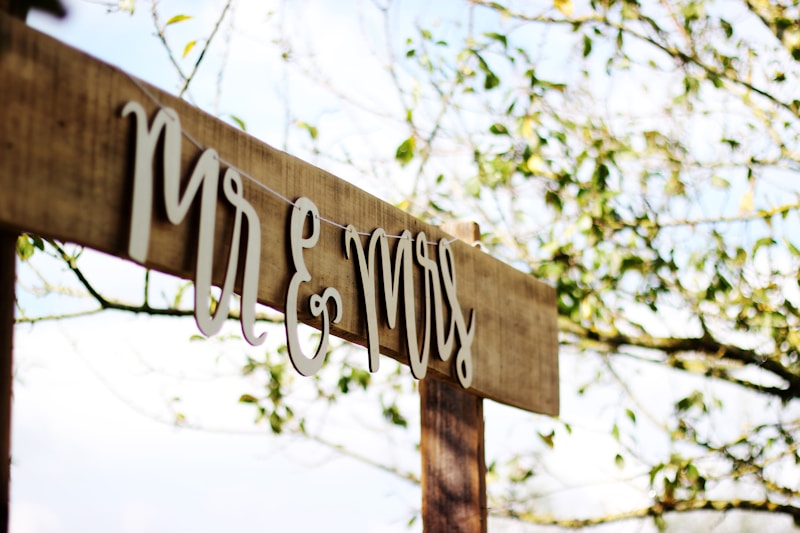The Impact of Alterations on Wedding Dress Fit: A Comprehensive Guide
The Impact of Alterations on Wedding Dress Fit: A Comprehensive Guide
Choosing the perfect wedding dress is one of the most important decisions for any bride-to-be. However, once you find "the one," alterations become essential to ensure that your dress fits perfectly. In this article, we’ll explore the impact of alterations on wedding dress fit, covering essential aspects such as common alterations, the timeline for alterations, costs, and tips for ensuring a flawless fit on your big day.
Understanding Wedding Dress Alterations
Alterations are modifications made to the dress to enhance fit, comfort, and appearance. Even the most beautifully designed dresses often require some degree of alteration due to the varying body shapes and sizes of brides. It is crucial to understand the roles alterations play in achieving that dream fit, especially considering the emotional and financial investment involved in securing the perfect dress.
Common Types of Alterations
| Type of Alteration | Description |
| Hem Length Adjustment | The process of altering the length of the dress, ensuring it suits the bride's height and chosen footwear. |
| Waist Adjustment | Taking in or letting out the dress at the waist to achieve a snug fit or added comfort. |
| Cup Insertions | Adding padding or cups for support and shape, particularly for strapless dresses. |
| Strap Adjustments | Modifying the length or style of straps to provide suitable support and visual appeal. |
| Training Modifications | Adjusting the train length and style to align with the bride's vision and comfort. |
These alterations can significantly influence the overall fit and aesthetic of the bridal gown, ensuring that the bride feels both comfortable and confident on her special day.
The Timeline for Wedding Dress Alterations
A well-planned timeline is essential when considering alterations for your wedding dress. Here is a straightforward guide:
- 3-6 Months Before the Wedding: Schedule your first fitting. Most dresses will require multiple fittings, and starting early gives ample time for any adjustments.
- 1-2 Months Before: The second fitting should take place when major adjustments are made. Ensure you bring your wedding shoes and any accessories.
- 1 Week Before: A final fitting is a must to address any last-minute adjustments.
By adhering to this timeline, brides can avoid last-minute scramble and stress, ensuring maximum comfort and confidence on the wedding day.
Costs of Alterations
Understanding the financial implications of dress alterations is crucial. The cost of alterations varies depending on the complexity of the changes and the tailor's experience. On average, brides can expect to pay anywhere from $150 to $500 for alterations, depending on the regions and shops. Here’s a quick breakdown:
| Type of Alteration | Estimated Cost |
| Hem Length Adjustment | $50 - $150 |
| Waist Adjustment | $50 - $100 |
| Cup Insertions | $20 - $60 |
| Strap Adjustments | $30 - $70 |
| Training Modifications | $50 - $150 |
It's advisable to budget for these costs early in the planning process to avoid overspending as the wedding date approaches.
Tips for Ensuring a Flawless Fit
Achieving the perfect fit involves more than just choosing the right tailor. Here are helpful tips to make sure alterations are successful:
- Consult with a Professional: Always work with an experienced bridal tailor. They understand wedding dress construction and the necessary adjustments for a perfect fit.
- Bring Your Wedding Essentials: During fittings, wear the shoes, undergarments, and accessories you plan to wear on your wedding day to better gauge how the dress fits.
- Communicate: Clearly convey your comfort level and any concerns regarding the fit to your tailor. Good communication significantly enhances the alteration experience.
- Stay Patient: Fittings can be time-consuming, and it might take several adjustments to achieve your desired fit. Patience and trust in the process are key.

Since fitting a wedding dress is a meticulous process, it’s common for brides to wonder about how long it takes for the alterations to be completed. Typically, alterations can take from two to six weeks, depending on demand and tailor efficiency. Always factor this into your timeline!
Conclusion: The Importance of Thoughtful Alterations
In conclusion, the impact of alterations on wedding dress fit cannot be overstated. Thoughtful and professional alterations lead to a stunning look that enhances the bride's confidence on her big day. As you navigate through the wedding planning process, remember the importance of starting your alteration journey early, budgeting appropriately, and communicating effectively with your tailor. With the right approach, your wedding dress will not only fit perfectly but will also be a true reflection of your personal style on one of the most special days of your life.
For brides looking for additional information, consider searching for commonly asked questions such as “How much do wedding dress alterations typically cost?” or “What should I wear to my fitting?” Finding answers to these queries can further enhance your overall experience.
